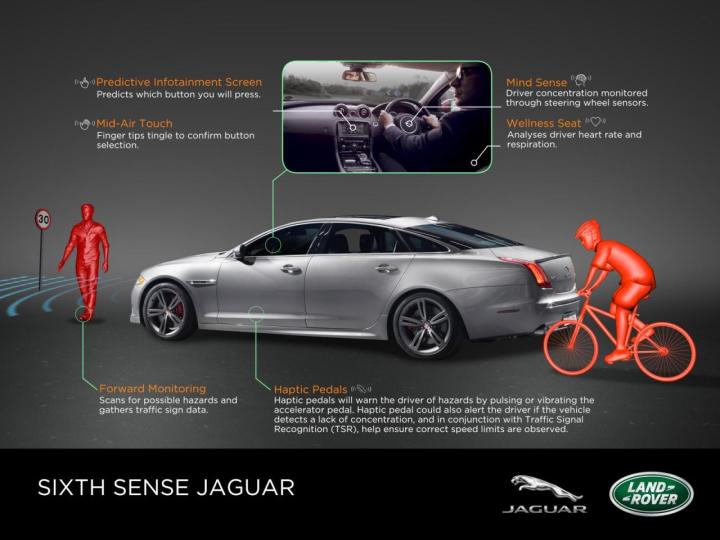
OK, so the remote-controlled Range Rover Sport is probably cooler, but JLR’s Sixth Sense project is arguably the most likely to keep you safe behind the wheel.
The company’s research is designed to reduce the number of traffic incidents on the road, particularly those caused by distracted, fatigued, and stressed motorists. Sixth Sense utilizes brainwave monitoring technology, complex analytics, and haptic feedback systems to accomplish this, combining elements of sports, medicine, and aerospace sciences.
“One key piece of new research is to see how we could measure brainwaves to monitor if the driver is alert and concentrating on driving,” said Dr. Wolfgang Epple, JLR’s Director of Research and Technology. “Even if the eyes are on the road, a lack of concentration or a daydream will mean the driver isn’t paying attention to the driving task. They may miss a warning icon or sound, or be less aware of other road users, so we are looking at how we could identify this and prevent it causing an accident.”

The first element of Sixth Sense is called Mind Sensing. Using sensors embedded in the steering wheel, Mind Sensing can differentiate between the brainwaves of an alert person and those of a drowsy one, prompting the driver to focus up when their concentration drifts.
Another component is called Driver Wellness Monitoring, which keeps tabs on the pilot’s vitals with a medical-grade, seat-mounted sensor. The device can measure the occupant’s heart beat and breathing patterns, recognizing if a serious illness or incapacitation event occurs.
Additionally, JLR is developing a Predictive Infotainment Screen that boasts a feature called mid-air touch. Mid-air touch uses hand-tracking cameras inside the vehicle to anticipate what button the user will press, and could potentially integrate a haptic feedback system that acknowledges successful button selection with a tap or tingling sensation.
The goal here is to keep your eyes off the screen and on the road for more of the time. In user trials, the speed of successful selection increased by 22 percent.

Another function residing under the Sixth Sense umbrella is a haptic accelerater pedal, which uses a series of vibrations and pulses to notify the driver of obstacles, traffic signals, and excessive speed.
While it’s unlikely you’ll see any of these features on a production car anytime soon, they’re a clear indication of where the automotive tech industry is going. They may not be as a cool as a remote-controlled SUV, but they’re pretty cool nonetheless.
Editors' Recommendations
- Land Rover searches for ways to keep customers and regulators satisfied
- Jaguar Land Rover is developing this amazing 3D head-up display
- BMW and Jaguar-Land Rover set aside their differences to develop new EVs


